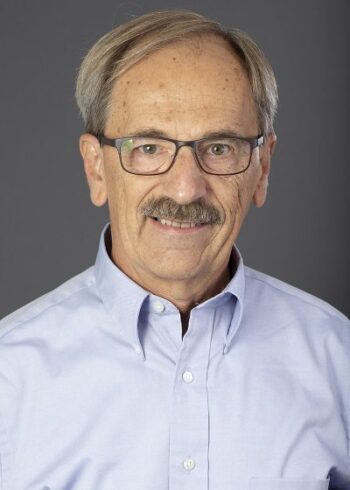From The Editor: Smart Engineering Requires Thinking Without Constraint

The month of May brings many things I enjoy, including the “Smart Engineering” issue of Informed Infrastructure. Each year when this issue is being prepared, I look up Smart Engineering to see the current definition and find some examples. In general, I think we can settle on “engineering that uses processes and IT tools for innovative and interdisciplinary solutions in products, production and infrastructure.” The reader can add or revise as you feel necessary.
Following the C’s
So what does such a definition mean for engineers? How innovative can we be? I read an article that cited the “5 C’s of Innovation”: competition, collaboration, culture, catalysts and constraints. (I’ve used a similar method to help my university seniors realize three of the skills a project manager needs to develop—the “3 C’s”: communication, coordination and delegation, which causes a chuckle but helps them remember.)
To be innovative, one must stretch their imagination through those 5 C’s; and I mean really stretch. I started my career with a slide rule and drafting tools, and I’m not sure there were folks anticipating the workplace as it is now. Even having experienced the evolution firsthand, it’s difficult to believe. So what’s next?
The following are some random ideas I’ve heard about or made up. I truly believe there should be no limits (or constraints, as noted above). After all, there was no way I could conceive of my car parking itself, let alone driving me across town with no physical input from me.
Some Smart Ideas
• Smart irrigation systems. How often have you seen someone’s lawn sprinkler system spewing water while it’s raining? Shouldn’t they be controlled by moisture content? Of course, clean water is going to become more of a concern in the near future. Perhaps there should be an alternative to lawns.
• Converting downward force (kinetic energy) to electric energy. The force created by vehicles and footsteps may be converted to something useful. This already is being done in an office in the United Kingdom, creating enough energy to recharge phones. I recently had the opportunity to watch some of my young friends at a playground—there’s a lot of energy being expelled at an active playground! In a similar manner, a few years ago, a group of our engineers built a merry-go-round for children to play on and connected it to a well. Need water? Send your children out to play.
• We have to create more efficient and varied ways to reuse plastic and develop other materials that aren’t petroleum based to replace plastics. If you ever want to find out about a seriously harmful subject, type in “how much plastic” into Google. That’s all you need to enter, and you will find article after article about the detrimental effects of plastic, including how much you have unknowingly eaten.
• 3D printing with other materials. Can we build structural members or even a house with 3D printing? As it turns out, we can. Houses have been constructed using 3D printing and a cement mixture, and the time required is less than you might imagine. New materials are being tested rather than using cement, because its production has a high carbon footprint. This should be developed and marketed so it becomes affordable and sustainable, providing an economically viable solution for the unhoused.
• Further development of electric vehicles. The auto industry is well on its way to electric vehicles, which will help the environment to some extent. Now it’s time to figure out how to convert all vehicles to electric power. Container ships, bulk carriers, trucks, airplanes—all methods of transporting goods (and people) need to reduce their carbon footprint and use of fossil fuels. Depending on what study you read, we will run out of currently known oil and gas in 40 to 50 years. And if we use all of that, our climate and air quality may not be fit for our way of life. We need to spend much more time and money on this problem, so our grandchildren won’t have to ask us: “What were you thinking?”
There are many more innovative and smart solutions being developed every day. (I personally am still waiting for the flying cars I saw in the “Jetsons” TV show.) That’s what keeps engineers going. There have been great times to be an engineer, and now ranks right up there with any of them. Our challenges are huge and vitally important to the health of our planet and all that live on it. If you have any ideas to make our community smarter, please let us know (no constraints).
About Robert Schickel
Robert Schickel was born in New Jersey and received his BS in Civil Engineering degree in 1971 from Valparaiso University in Indiana. His career started as a bridge design engineer and expanded to include design of various transportation facilities, including highways, bridges, rail lines and stations, and airport runways. Mr. Schickel managed engineering offices ranging from 20 to 140 people. He also served as a consultant to a large utility company. Mr. Schickel currently resides in Indiana and serves as Adjunct Professor for the College of Engineering at Valparaiso University. He enjoys his retired life at his lake house, playing golf, listening to music and spending time with his family, especially his grandchildren.


